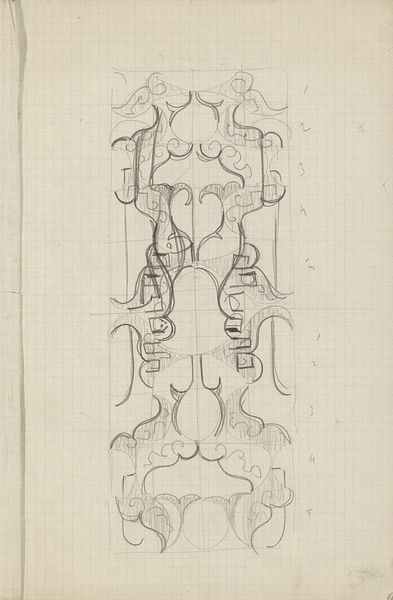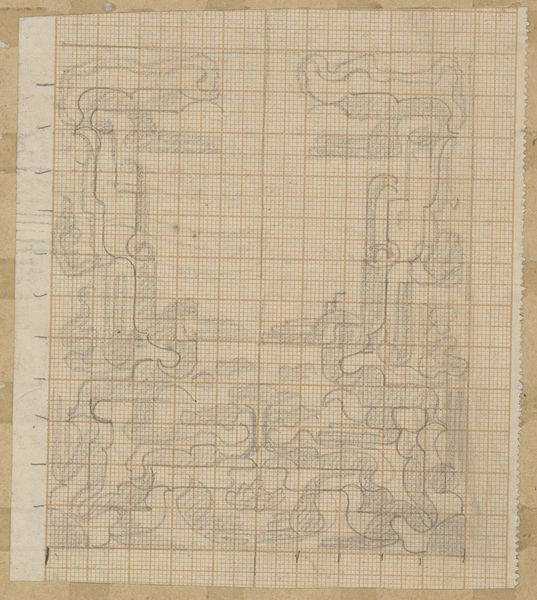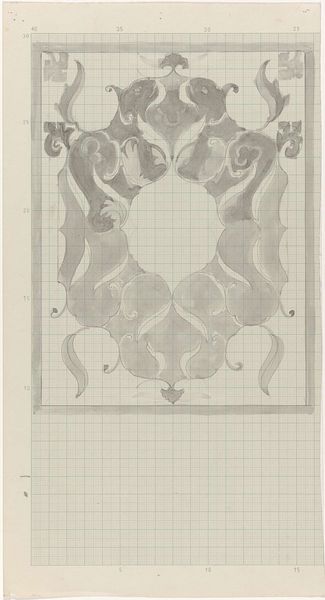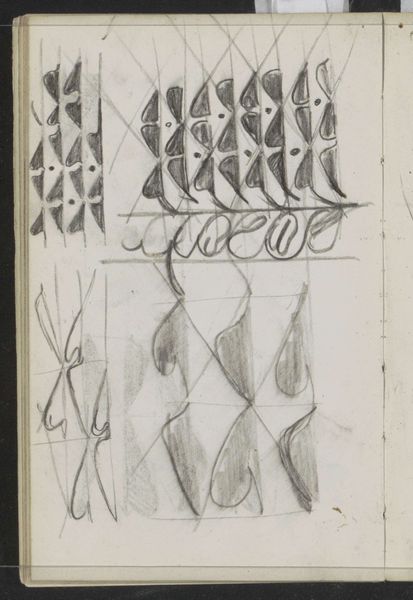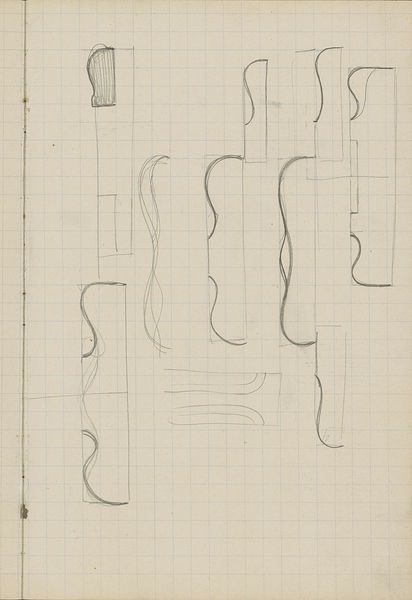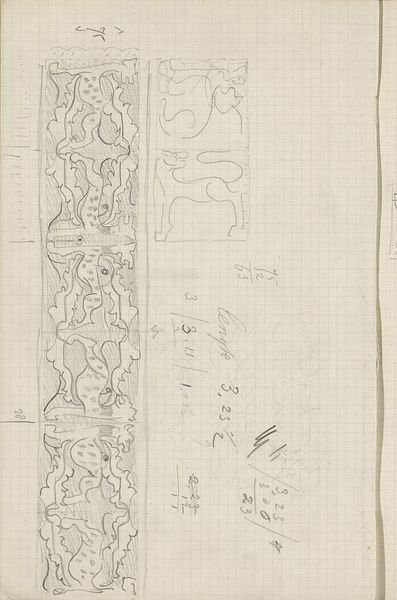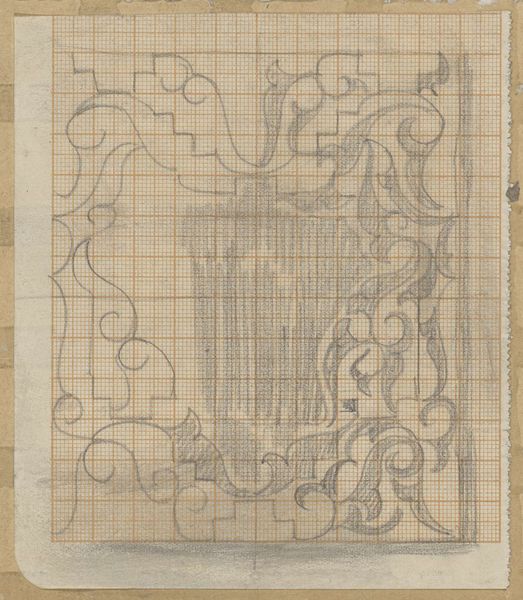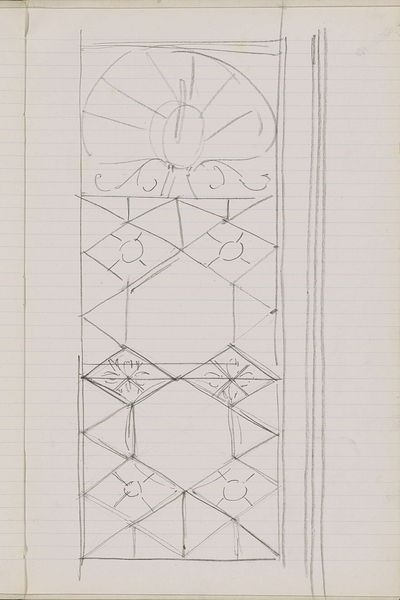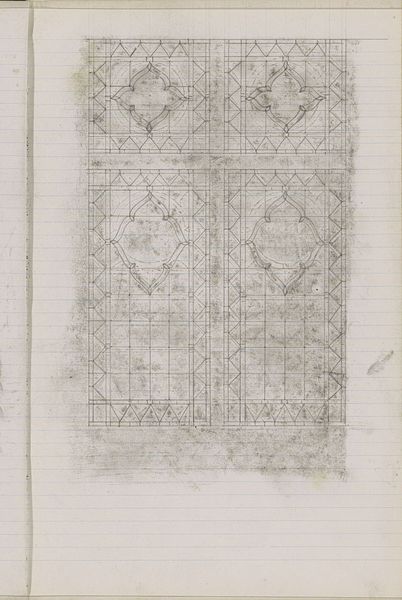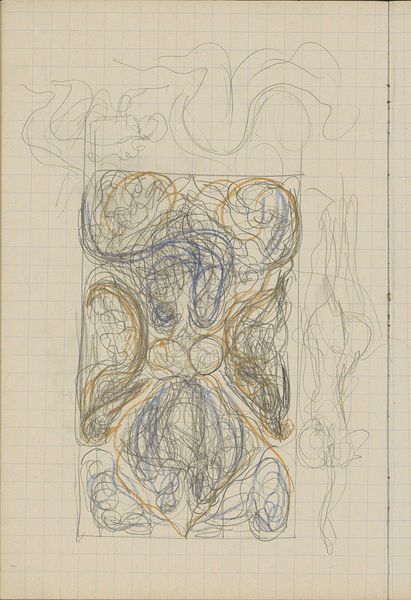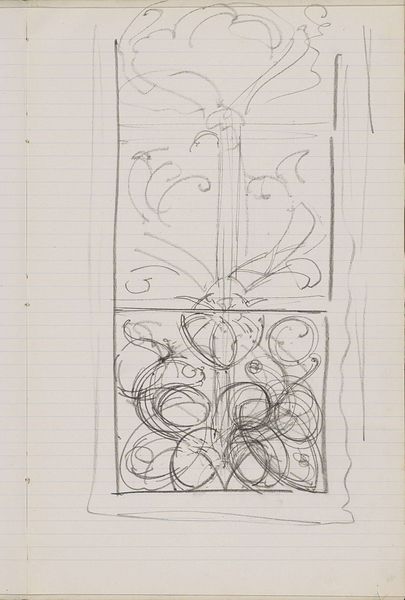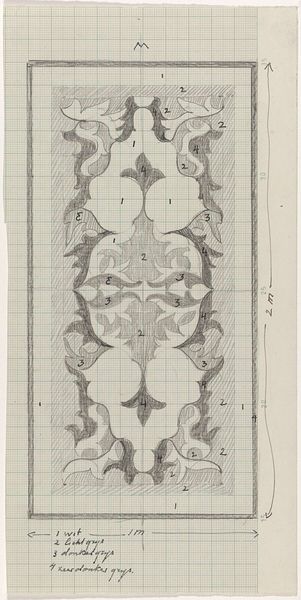
drawing, ornament, paper, graphite
#
drawing
#
ornament
#
art-nouveau
#
paper
#
geometric
#
line
#
graphite
Copyright: Rijks Museum: Open Domain
Editor: So, this drawing is titled "Fantasieornament" by Carel Adolph Lion Cachet, made sometime between 1874 and 1945. It's graphite on paper, a design for an ornament, and what strikes me is its sort of unfinished, skeletal quality. It’s literally on graph paper! What do you make of it? Curator: Immediately, the grid stands out. It is the silent labor underpinning artistic "inspiration". It is a technical tool and it serves a concrete purpose. Note also the repetition of these motifs. Does this signal mass production, an age where ornamentation is no longer a unique, handcrafted endeavour, but rather designed with reproduction in mind? Editor: That's fascinating. So the drawing itself becomes a document of a changing mode of production? Curator: Precisely! And look at the use of graphite. It's not precious, not permanent. It’s about the process of sketching, iterating, drafting. Ornament, traditionally associated with luxury, is here explored through inexpensive and readily available materials. Editor: It almost demystifies the art-making process, doesn't it? Like showing the blueprints of a dream. Curator: Indeed. It invites us to consider the labor and the material conditions that enable the creation of even the most fantastical ornament. We tend to think of Art Nouveau as elegant and flowing, but here we see the mechanics of its making. Editor: This has totally shifted my perspective. I was initially drawn to the delicate lines, but now I see the work as a commentary on industrialization and artistic labor. Curator: It's about recognizing art not as solely an expression of genius, but also as the product of specific materials, processes, and social forces. We must be inquisitive about the social and economic conditions that bring art into being.
Comments
No comments
Be the first to comment and join the conversation on the ultimate creative platform.
